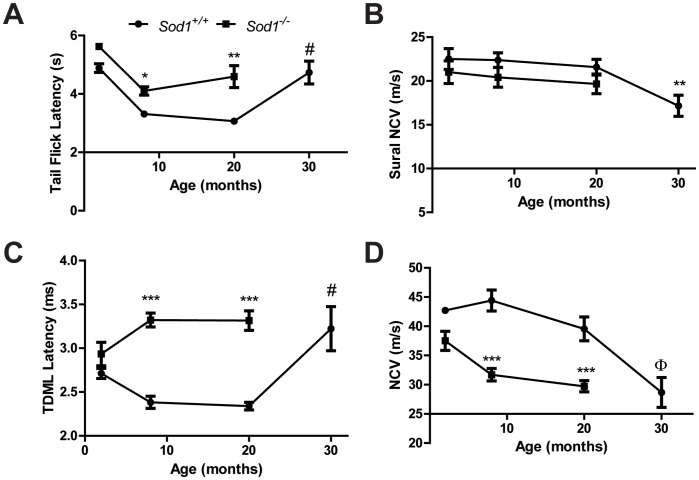Figure 3. Behavioral and functional measures of sensory and motor nerve function in Sod1 mice.
A) The behavioral tail flick response to a thermal stimulus in the Sod1 +/+ mice at 2, 8, 20, and 30 mo (n = 7, 16, 10, and 7, respectively) and Sod1 −/− mice at 2, 8 and 20 mo (n = 4, 21, and 8, respectively) is a measure of both sensory and motor nerve function. B) Sensory nerve function was assessed using sural nerve conduction velocity (NCV) in the Sod1 +/+ mice at 8, 20, and 30 mo (n = 13, 9, and 12, respectively) and Sod1 −/− mice at 8 and 20 mo (n = 10 and 7, respectively). Motor nerve function was examined by measuring C) Tail distal motor latency (TDML) in the Sod1 +/+ mice at 2, 8, 20, and 30 mo (n = 8, 21, 12, and 9, respectively) and Sod1 −/− mice at 2, 8 and 20 mo (n = 6, 17 and 4) and by measuring D) sciatic motor NCV in the Sod1 +/+ mice at 2, 8, 20, and 30 mo (n = 7, 15, 7, and 9, respectively) and Sod1 −/− mice at 2, 8 and 20 mo (n = 6, 19 and 6). *p<0.05, **p<0.01, and ***p<0.0001 compared to age-matched Sod1 +/+ mice; Φp<0.01 and #p<0.0001 compared to Sod1 +/+ mice at 20 mo.

